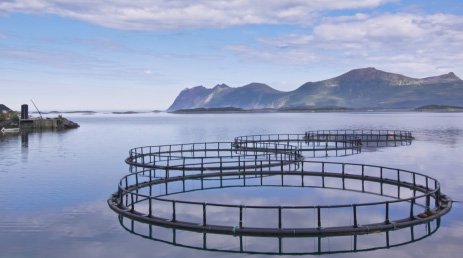Global trends increase the importance of agricultural reinsurance - With the global population reaching eight billion in the upcoming years, the need to secure food production has become more important than ever before. Competition on food resources has increased, while arable land is shrinking and global food commodity prices are rising. An increase in the frequency and severity of natural catastrophes has led to a growing demand to mitigate the risks farmers face, and help them better react to unforeseen events.
Global Agriculture
A leading reinsurer in Agriculture

Climate change, natural catastrophes and a rising need for food security have spurred the recent growth in agricultural insurance around the globe. Allianz Re's agricultural teams operate from various locations - Munich, Switzerland and Singapore - with experts providing reinsurance solutions to clients across the globe.
Crop Insurance

Crop Indemnity Insurance - in particular multi-peril crop insurance - is an important tool to respond to these requirements both from an individual farmers' as well as from national and global perspectives.
Parametric Insurance

Parametric insurance serves as a substitute or supplement for indemnity
based products such as single / named-perils or multi-perils insurance.
The indemnification of parametric products is based on a climatic or
agronomic variable of parametric that mimics the Insured's crop
partially or fully during the phenological phases. The variable can be
obtained by using weather station information, satellite information,
yield statistics or a combination thereof. Without a lengthy loss
adjustment process, the insured gets compensated for his / her sustained
yield loss through a straight-forward loss settlement process and loss
payments made within a few days or weeks after policy expiration.
Livestock

Global livestock production is increasing globally due to growing population and change in diets towards animal-based products such as meat, milk and eggs. Livestock farmers are exposed to many risks which depend on type of livestock, farms size and local geographical conditions (i.e. exposure to endemic and epidemic diseases).
Traditional livestock insurance covers mortality due to accident and non-contagious diseases. Cover can be extended to epidemic diseases when animals are culled on governmental order and livestock owner are indemnified for the animal value and/or Business Interruption costs.
New and specific products cover for example shortage of fodder by an index on drought or on the vegetation. There is also a trend towards margin/revenue cover which guarantee a minimal price or gross margin.
Pet Insurance

Similarly to human health insurances, pet insurances aim to protect the pet owners (or pet parents) from unexpected and expensive medical treatments. Depending on the level of coverage, we differentiate between the following main product types - Accident Only, Time Limited, Maximum Benefit and Lifetime products. The pet owners are usually compensated for medical expenses, purchase price (in case the pet is stolen), hospital visits, kennel and cattery fees (should the pet need to stay for recovery), death from illness or injury, theft or loss, complementary treatments, advertising costs and rewards.
Aquaculture Insurance

Aquaculture is a growing indudstry worldwide - in the past 15 years the
volume of production doubled. Aquaculture insurance typically covers
mortality of fish stock caused by storm, disease, algae bloom,
pollution, contamination, collision, theft, predators, malicious damage
and change in water conditions. In addition, also the structures (e.g.
cages, nets, feeding systems, etc) are included in the same insurance
policy. Currently, most aquaculture insurances cover caged fish farms
(e.g. salmon farms), but as the share of inland aquaculture and
recirculating aquaculture system (RAS) grows significantly faster, the
insurance industry will react to this and develop solutions to manage
those risks too.
Greenhouses Insurance

Driven
by land scape value maximization and the need to speed up production of
export quality crops in a controlled environment that incorproates
state of the art technology, some farming enterprises have gone for
greenhouse product of high values crops such as flowers and other
horticultural crops. Greenhouse production can be split into sections
as follows: structure (usually steel or aluminium); cladding (usually
plastic or glass); crops (usually floriculture and horticulture);
irrigation system (usually drippers or fine spray): cold rooms
(compressors for temperature control); and transit of produce for the
farm to the airport for export (by own refrigerating vehicle or hired
one). All these sections can be subjected to losses due to perils such
as fire, windstorm, hailstorm, theft, animal damage, the breakdown of
compressors in the cold rooms, and vehicle accidents in transit.
Agricultural insurance market worldwide

The Allianz agriculture portfolio is underwritten worldwide, with underwriting capacity provided to both mature and emerging markets. Key clients are often semi-governmental organizations such as agriculture insurers acting in a public private partnership. We also work with private companies either as specialized monoliners or as multiline companies.
Risk Appetite

Within Agriculture, Allianz Re writes the following business subclasses:
- crop
- livestock
- bloodstock
- pet
- forestry
- aquaculture
- crop
- livestock
- bloodstock
- pet
- forestry
- aquaculture